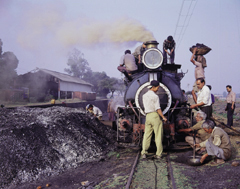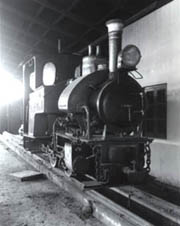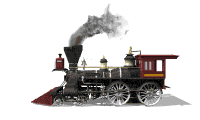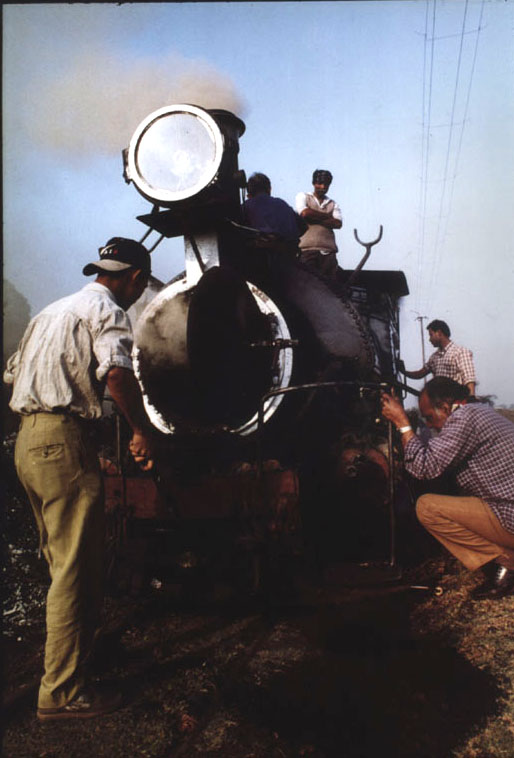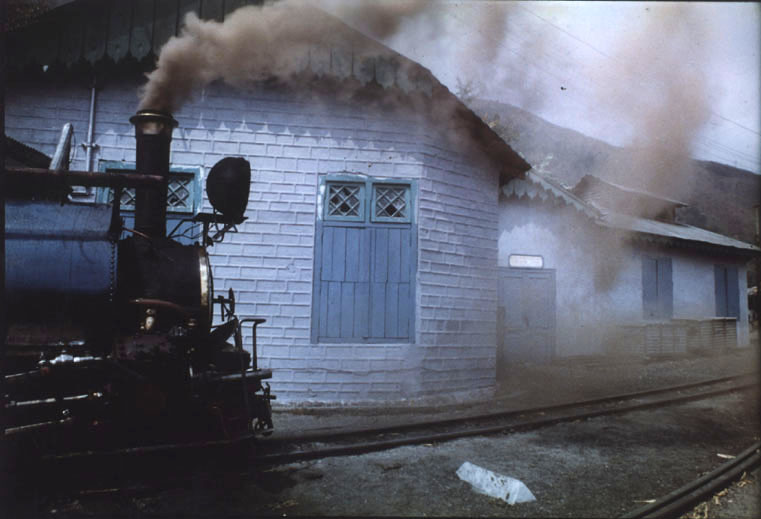Steam
Locomotives of India ~
the
complete site on Indian steam
~
the
complete site on Indian steam
Darjeeling
Himalayan Railway
Photographs and content
- Dileep
Prakash
The
Darjeeling Himalayan Railway (DHR) is one of the most well known mountain railways
in the world. It was built in 1881 and is over a hundred years old today. It
connects the plains of West Bengal at New Jalpaiguri with the popular hill station
of Darjeeling (6812 ft), a distance of 88km.
A
DHR loco gets attended to. March 2000
Baby
Sivok steamed up.
Baby
Sivok at Tindharia yard.
This
lovely little toy-train runs through the lower reaches of the Eastern Himalayas
from New Jalpaiguri into Darjeeling through some the most picturesque mountain
country. It basically follows the motor-road and criss-crosses it scores of
times. Though there are no manned railway crossing the motor traffic is disciplined
and come to a halt when the train gives its sweet whistle.
The
88 km line is worked by 14 B-Class Saddle Tanks 0-4-0 of 2' guage built by Sharp
Stewart, Glasgow, Scotland; North British, Glasgow, Scotland and Baldwin Loco
Company, Philadelphia, USA. Apart from imported locos the Tindharia workshop
also made 4 locos much to their credit. The Tindharia Workshop is equipped to
handle all minor and major repairs of the locos. Other locos that have worked
the line here are the 'A' class, ' C ' class and a Garrat loco as well.
The
DHR climbs to a height of 7400 feet at Ghum (the highest station on IR &
the 2nd highest station in the world), where on a clear day Mt. Kanchenchunga
stands majestically in the backdrop.The line then descends to 6812 ft at Darjeeling.
The steepest gradient on the line is 1 in 20 and the average is about 1 in 29!
The sharpest curve on the line is at mile 21 and has a radius of 59 feet!! The
DHR does not have a single tunnel, unlike most hill railways, but employs the
unique system of loops and Z's. It has 3 loops and 5 Z-type reverses. The most
famous of all loops is the Batasia loop which is between Ghum and Darjeeling
stations. The Batasia loop is a photographers paradise. The weather at the loop
changes frequently and if you're lucky it might get dense with fog or suddenly
brighten up.
The
DHR was accorded 'World Heritage Status' by the UNESCO in December 1999 ~ hopefully
giving steam a chance to survive.
On
the left:
The
Baby Sivok was revived by the Tindharia Works in 1999. It was lying for several
years outside the Siliguri station when it was brought toTindharia. The loco
manufactured by Orenstein and Koppel, Berlin (MBA), Germany in 1911 was used
in tea gardens and mines of Assam during British times. Today the Sivok brings
pride to all at the Tindharia Works.
DHR
beauty !!
Getting
ready at NJP.
